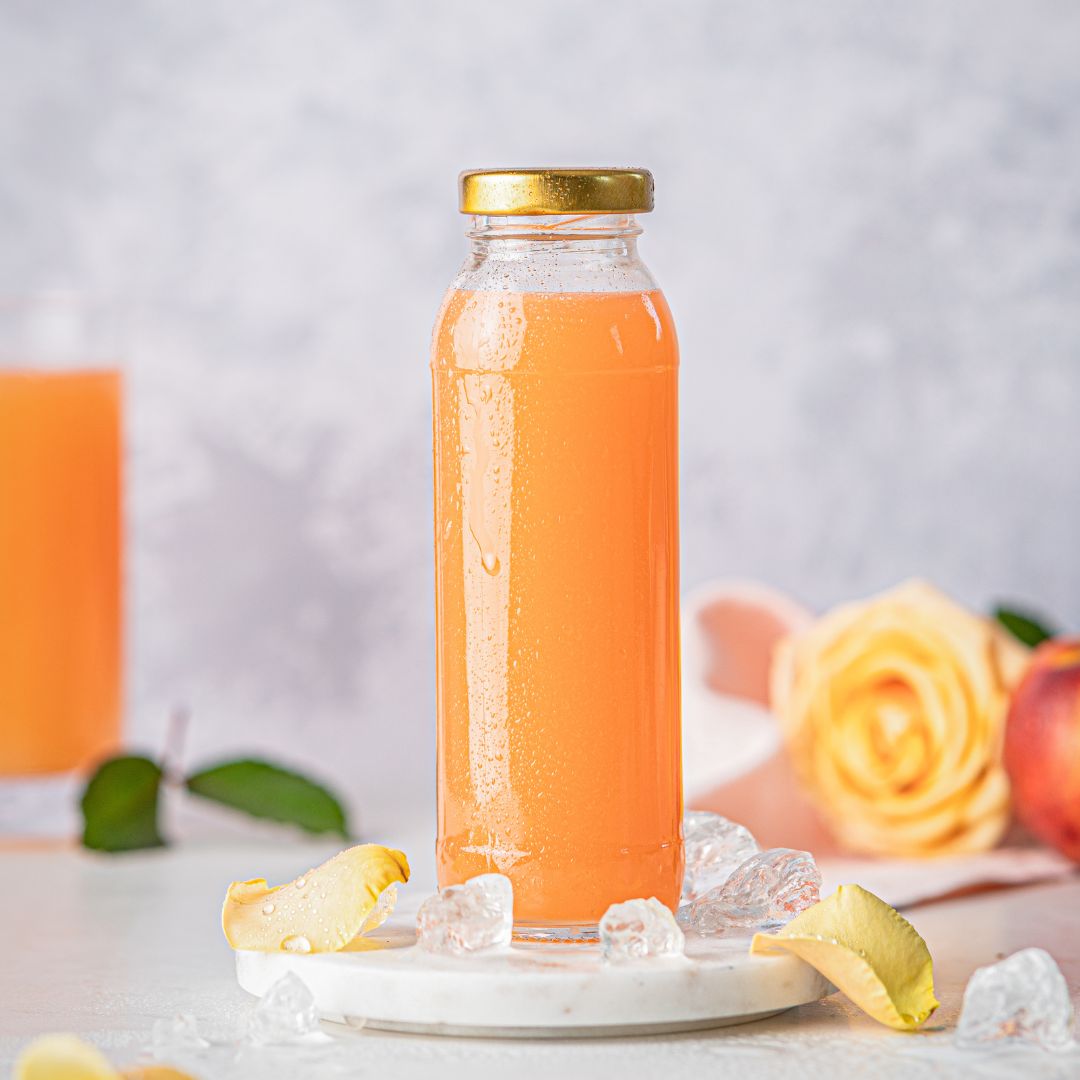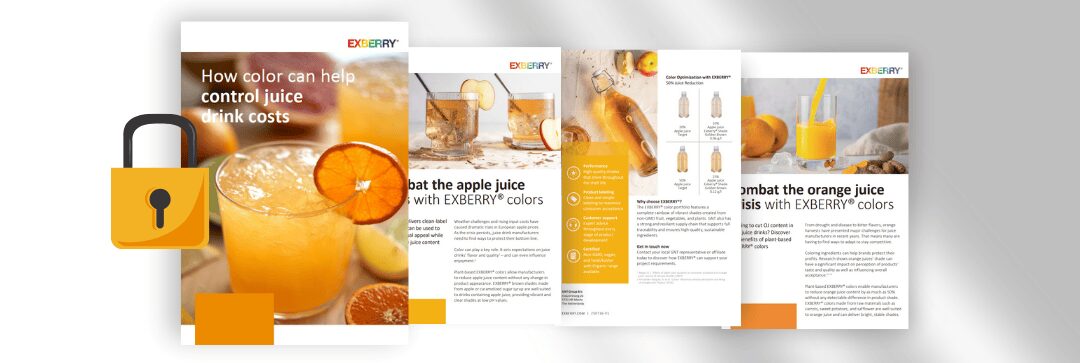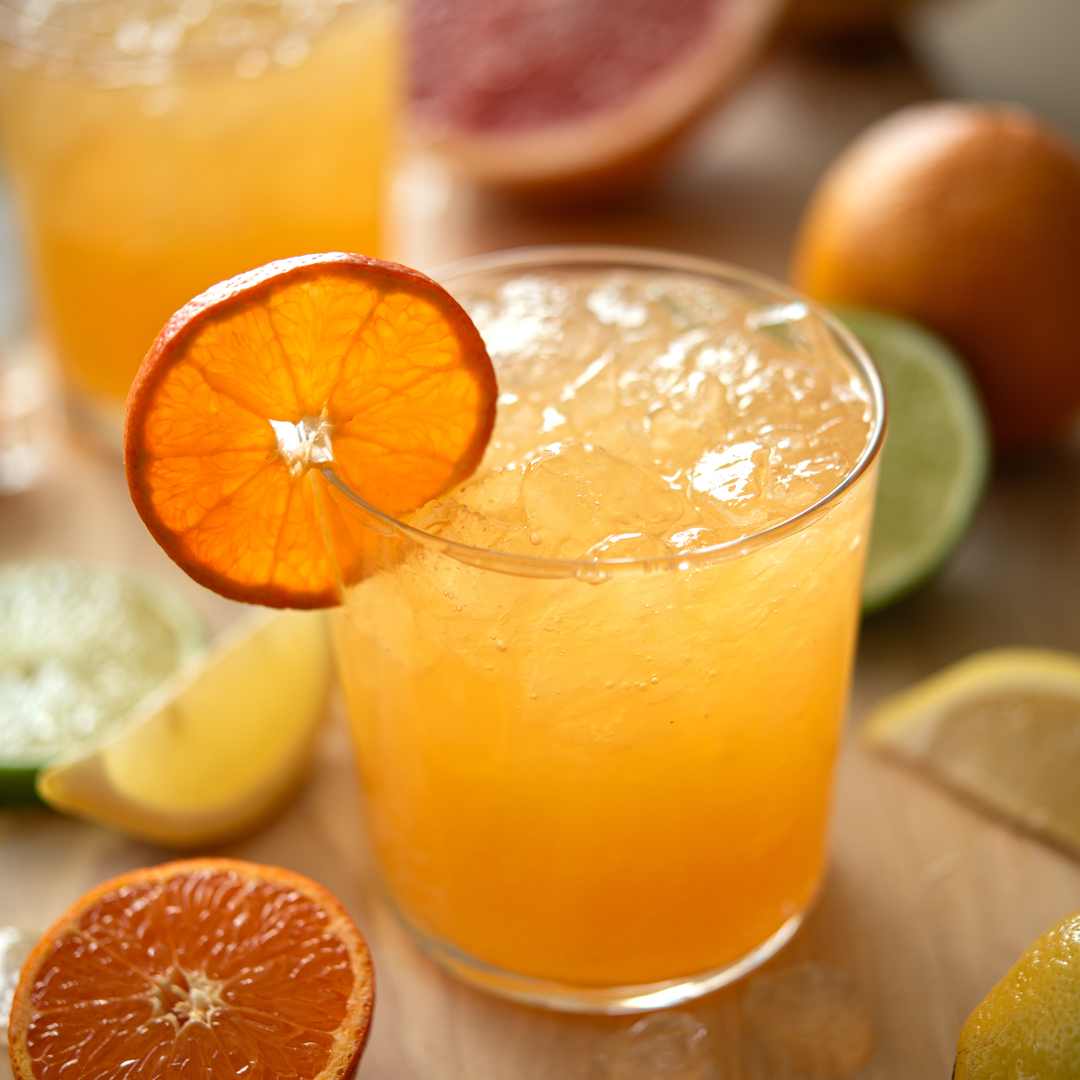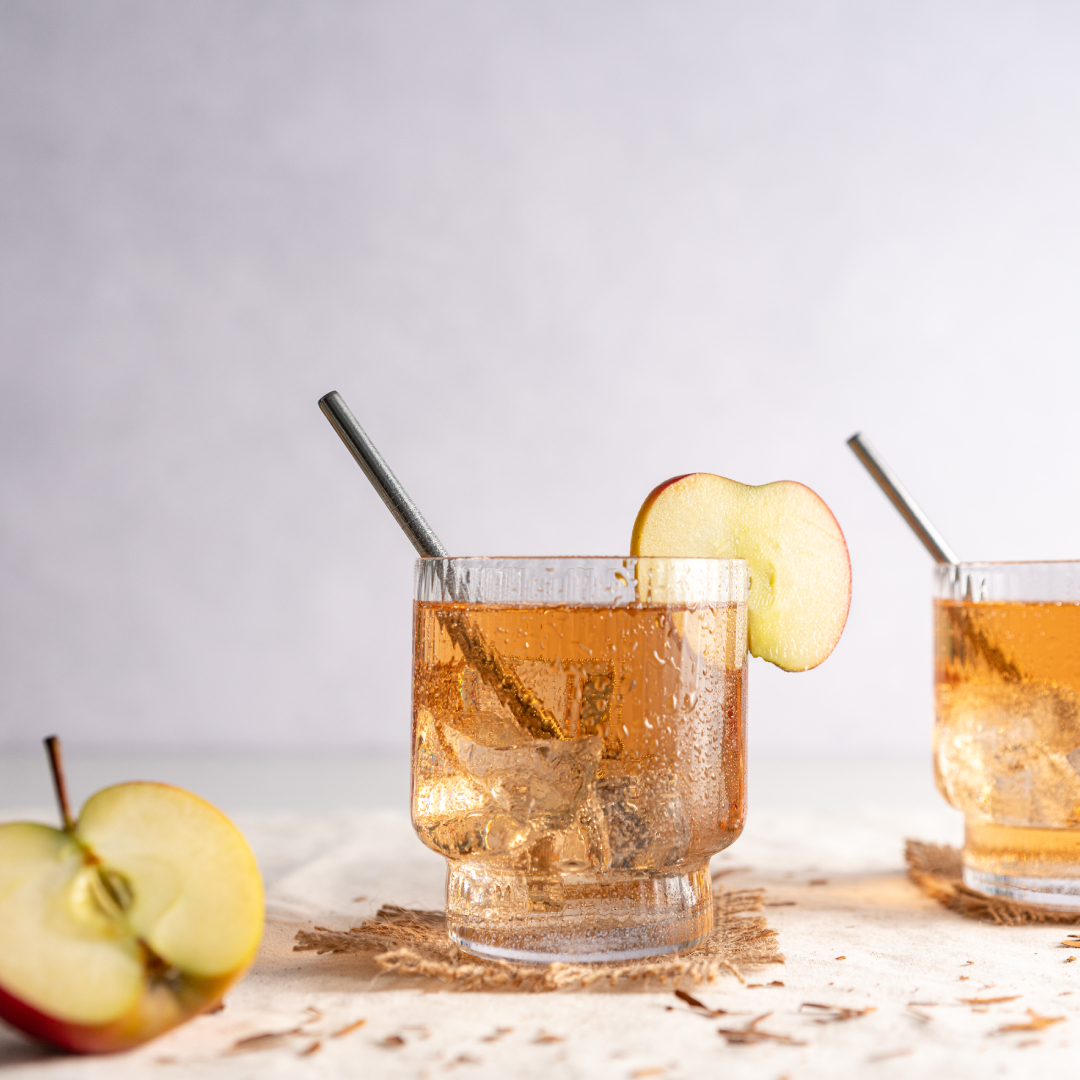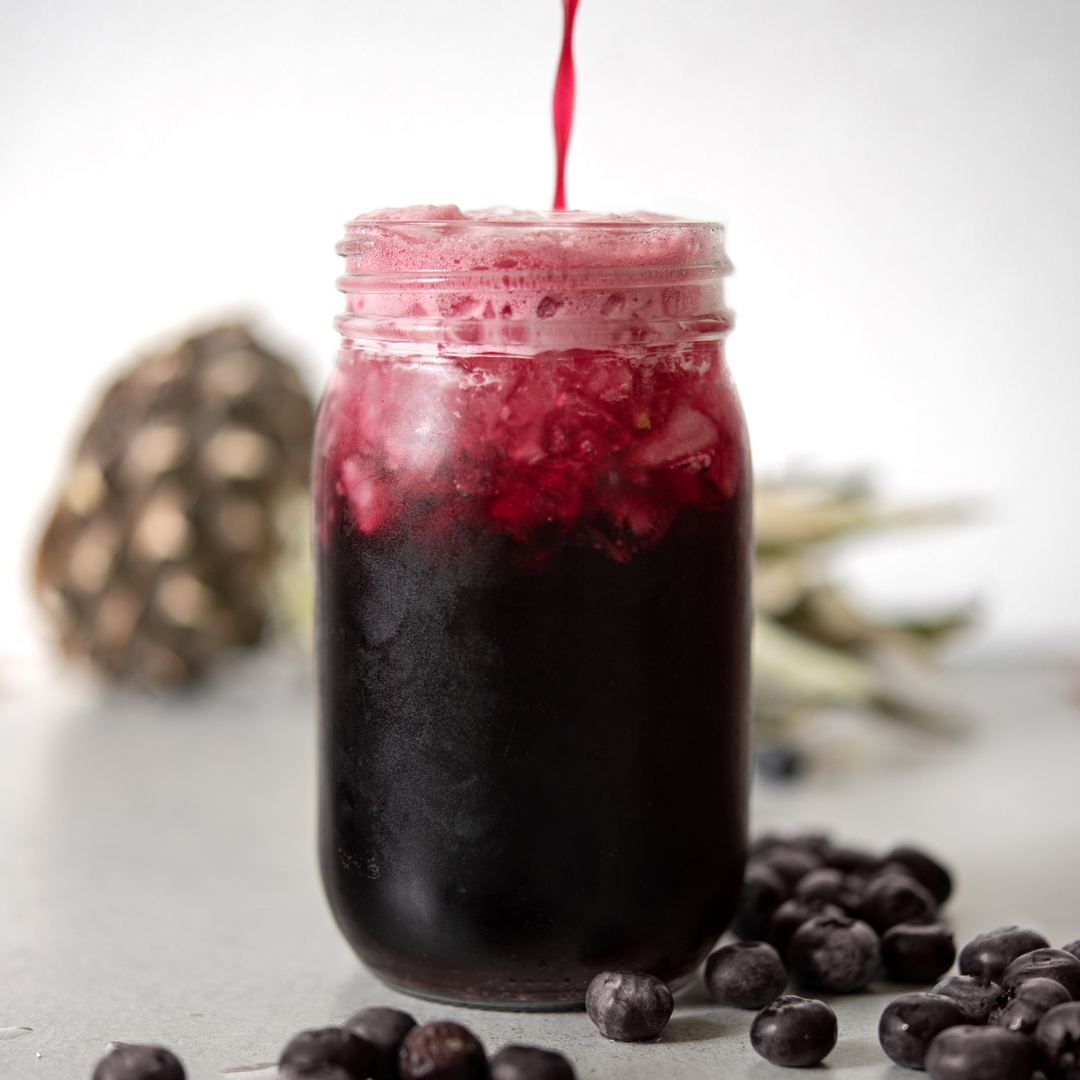How color can help control juice drink costs
The juice sector is experiencing huge turbulence – from price volatility to issues with crop quality. So how can manufacturers protect their profits while still delivering high-quality products?
Download our factsheets for orange and apple juice by filling out the form to get the insights you need to manage costs in your juice projects.
The juice crisis is creating challenges
Juice manufacturers have struggled to maintain affordable, high-quality supplies of raw materials including apples and oranges in recent times. As a result, the number of 100% juice drink launches has declined worldwide. [1]
Some brands have increased prices or reduced pack sizes to maintain their profit margins, but this may impact consumer acceptance.
Color can help you cut juice content
Ingredient optimization can provide an alternative strategy. Some brands are switching to other juice blends or just reducing the amount of juice in their recipes. Mintel analysis shows that the recent price volatility has led to an increase in global launches of drinks with a juice content below 24%.[1]
Coloring ingredients can play a key role in these products. They allow manufacturers to reduce the amount of juice in their beverages by as much as 50% without any change in product appearance.
This is important as studies show that consumers’ judgment of beverage’s taste, aroma, and flavor can all be influenced by the color. Some studies have also found that the intensity of the color can affect the intensity of taste and flavor perception. [2]
EXBERRY® colors keep your products natural
EXBERRY® is a consumer-friendly coloring solution made from non-GMO fruits, vegetables and plants. Our plant-based concentrates can provide a complete spectrum of vibrant shades – allowing you to adjust recipes while maintaining the optimal product appearance.
In our factsheet, we showcase how color is a tool to manage the cost volatility with EXBERRY®. Fill out your info on the side to access all information.
Apple juice
EXBERRY® Shade Golden Brown and EXBERRY® Shade Autumn Brown can provide browns with a yellow, orange, or red tint. They offer excellent heat and light stability with no turbidity or sediment in most applications, even at low pH.
EXBERRY® Shade Golden Brown can be listed as “caramelized sugar syrup, apple concentrate” in the EU. EXBERRY® Shade Autumn Brown can appear as “caramelized sugar syrup, carrot concentrate.” In the US, they are declared “caramel (color), fruit juice (color)” and “caramel (color), vegetable juice (color).”
Orange juice
Our EXBERRY® Shade Yellow – Cloudy Powder can be used to optimize the appearance of orange juice drinks.
It supports simple label declarations such as “concentrate (carrot)” in the EU and “vegetable juice for color” in the US. The color is also pH-independent and provides good light and heat stability, along with excellent stability throughout the full shelf life of the product.
Red-purple juices
EXBERRY® can enhance the look of red-purple juice drinks. Red berry drinks, for example, tend to brown over life. EXBERRY® can also be used in blackcurrant drinks to support juice reduction projects as well as to maintain their intense purple appearance throughout the shelf life.
EXBERRY® Shade Purple Plum concentrate is ideal for blackcurrant-based juice drinks. It ensures an appealing shade over shelf life and qualifies for simple label declarations such as “concentrate (carrot, blueberry)” in the EU and “fruit and vegetable juice for color” in the US.
Curious what we can do for you? Contact our color experts.
[1] Mintel ‘The Future of Juice & Juice Drinks: 2025’
[2] Spence, C. ‘The Crucial Role of Color in the Perception of Beverages’ Beverage Impacts on Health and Nutrition (2016)
